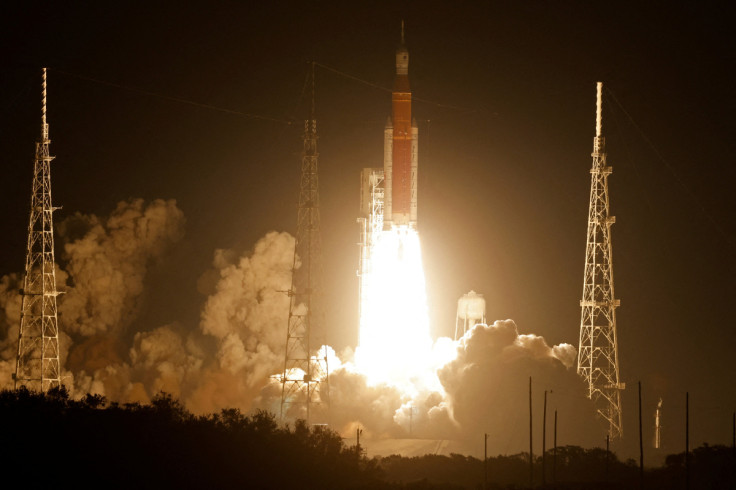NASA's Artemis I Rocket Launch Was So Loud That It Exceeded Predictions, Study Shows
KEY POINTS
- Researchers used "state-of-the-art" instruments to measure acoustics during the launch
- Maximum levels ranged from 127 to 136 decibels
- Researchers hope the data would prevent the spread of misinformation about the launch
Just how loud was the noise when the Artemis I mission lifted off? It exceeded expectations, a team of scientists has found.
NASA's Artemis I mission didn't just mark the beginning of a new era in spaceflight when the Space Launch System (SLS) lifted off from the Kennedy Space Center in November last year. It also marked the launch of what would become the most powerful rocket in the world, taking the spot of the previous record-holder, the Saturn V.
As part of a study, published in JASA Express Letters, researchers analyzed the noise measurements they recorded at various locations, ranging from 1.5 to 5.2 kilometers away from the pad during the launch of the rocket. The idea was to "improve the understanding of super heavy-lift rocket acoustics."
"Accurate noise models are needed to quantify and mitigate possible damage to launch pads, vehicles, and payloads as well as quantify community and environmental impacts," they wrote.
Researchers used "state-of-the-art" instruments for the measurement and found that the maximum levels ranged from 127 to 136 decibels (dB), which was "greater than pre-launch predictions."
More specifically, the maximum level reached 136 dB at 1.5 kilometers from the pad. At 5.2 kilometers away, the noise was 129 dB, which was 20 decibels higher than predicted, according to the American Institute of Physics (AIP). The noise was as loud as a chainsaw.
The sounds at loud venues such as concerts, nightclubs and bars can range from 105 to 110 dB — levels that can cause hearing loss in less than five minutes. The noise near a siren can reach 120 dB, while the sound of firecrackers be between 140 and 150 dB — levels that may lead to pain and ear injury.
When it comes to the "crackling or popping noise" that's associated with rocket launches due to the shock waves, the team found that at 5 kilometers away, the "crackling quality" was a whopping "40 million times greater than a bowl of Rice Krispies," study author Whitney Coyle said.
The results of their work could shed light into the acoustics of such rocket launches. The researchers hope such data would prevent the spread of rumors and misinformation just like what happened with the Saturn V, said study author Kent Gee.
There were rumors that the Saturn V was so loud that it ended up melting concrete and setting aflame grass a mile away. Researchers busted the myth, finding that while it was certainly noisy at 203 dB, it wasn't loud enough to melt concrete. Even if these things did happen, it wasn't the noise that caused them but likely the "radiative heating."
"We anticipate this letter will act as a reliable initial resource for acousticians, rocket scientists, and the general public," the researchers wrote. "Future analyses will focus on both source and propagation aspects of Artemis-I launch noise, helping to further characterize the rocket that will take us back to the moon, and beyond."

© Copyright IBTimes 2024. All rights reserved.






















